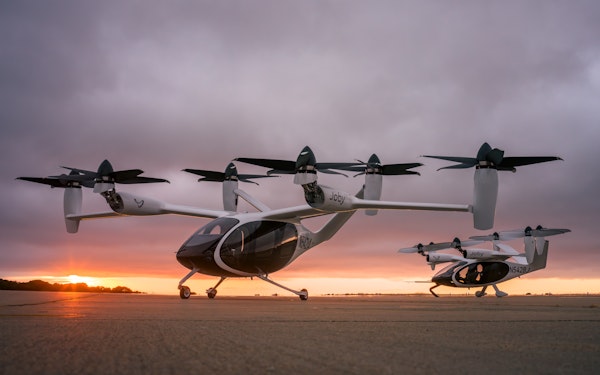Researchers are one step closer to integrating air taxis and other electric vertical takeoff and landing (eVTOL) vehicles into the country’s busiest airports, thanks to a new air traffic simulation developed by NASA’s Ames Research Center in California’s Silicon Valley and Joby Aviation.
These zero-operating-emission aircraft use electric power to take off, cruise, and land, and provide an appealing option for commercial industry interested in more sustainable transportation.
NASA and Joby researchers recently invited representatives from the Federal Aviation Administration (FAA), the National Association of Air Traffic Controllers, and stakeholders to view the simulation in the Ames’ air traffic control simulation facility, called FutureFlight Central. The two-story facility offers a 360-degree, full-scale simulation of an airport, where controllers, pilots and airport personnel can test operating procedures and evaluate new technologies.
“We’re trying to enable a better quality of life,” said Savvy Verma, urban air mobility researcher at NASA Ames. “Some people are stuck in traffic for hours on the way to the airport. A 12-mile trip can take 45 minutes. Imagine being able to do that same trip in 15 minutes.”
In preparation for air taxis and other aircraft flying passengers in and out of airports, NASA and industry partners are working with the FAA to demonstrate how creative use of existing tools and airspace procedures can support safe integration of air taxi operations into the national airspace.
The groups are also exploring potential changes to the current airspace system to enable an even greater scale of flights. The recent air traffic management integration simulation developed by NASA with Joby will provide useful air traffic controller data to the FAA and industry for integrating these aircraft into operations.
“There is so much momentum across the world for advanced air mobility,” Verma said. “We’ve been talking about integrating these kinds of vehicles into the airspace, but to be able to show it in high-fidelity simulation is very promising.”
[…]
NASA’s initial analysis of the simulation indicates that researchers could scale these procedures for operating eVTOLs in other airports throughout the country, which could reduce the associated workload on air traffic controllers. NASA plans to publish a complete analysis of the simulation results in 2024. The brand-new data will be provided to the FAA, commercial industry, and airports to help identify the air traffic controller tools and procedures could enable high-tempo integration of eVTOLs into near-term and future operations in airports. Enabling eVTOLs as a taxi service for passengers to and from airports in the future could begin to reduce carbon emissions and greatly improve the commute experience for passengers. This project work supports NASA’s Advanced Air Mobility mission, which focuses on air taxi and drone research with industry and government partners.
See here for some background. This is basically a press release from NASA, so adjust your expectations as you see fit. We traveled over Thanksgiving this year and I just picked up my daughter coming home from college for Christmas, so I’m down with ideas to reduce the number of people driving to and from the airport. I’m at least somewhat skeptical of this as a business model – surely air taxis would be expensive to use, so how big an audience could there be for them? – but perhaps this is a precursor to generalizing the service away from the airports as well. It also strikes me as a potential threat to rideshare services, which is no doubt why Uber has been playing in the flying car space as well. I’ll keep on keeping an eye on this and will let you know when there’s more to report.

